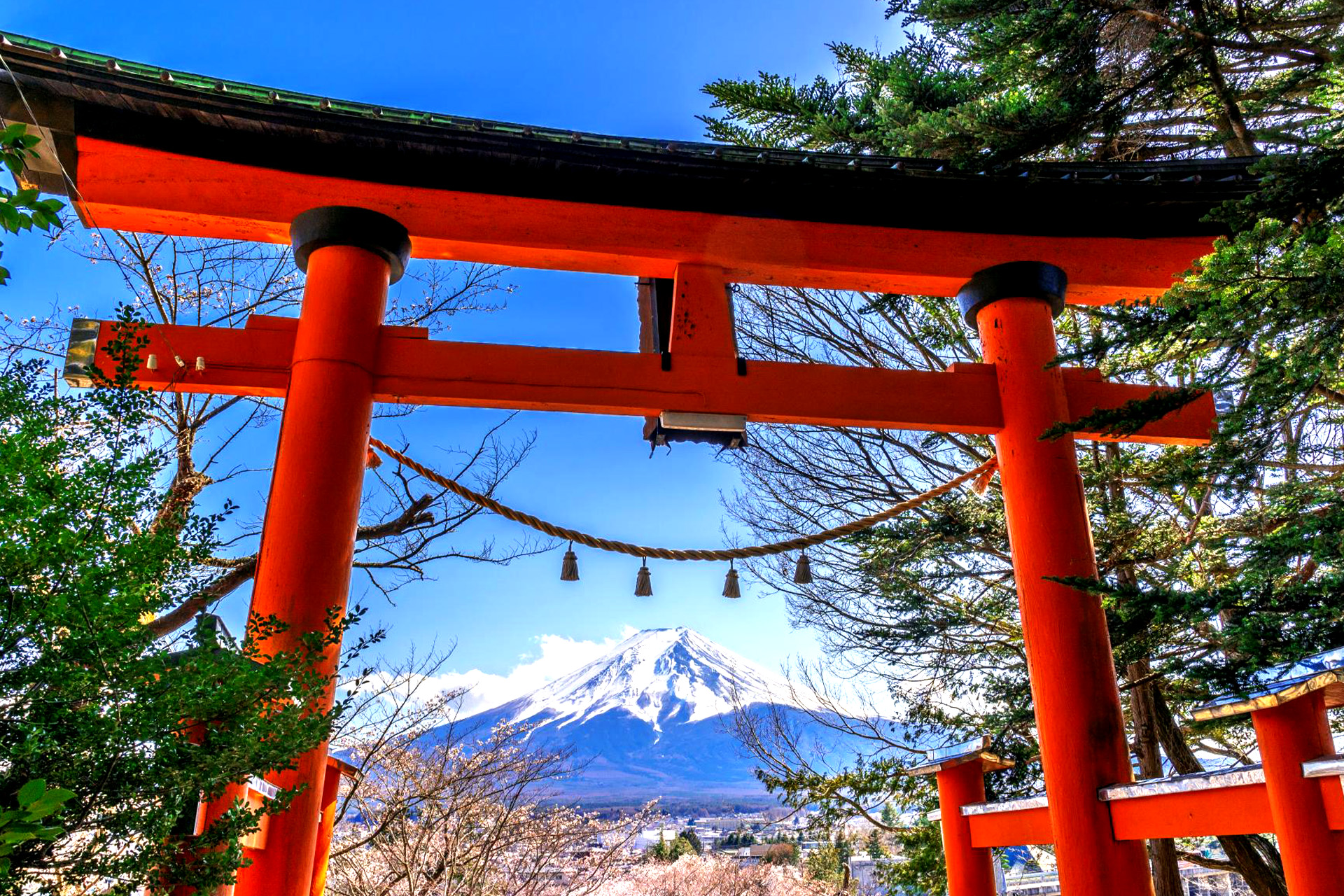News
Japan, the Land of the Rising Sun, is not only famous for its unique blend of tradition and modernity but also boasts countless cultural and natural symbols that attract millions of tourists every year.

These symbols not only represent the distinctive beauty of Japan but also carry profound historical stories and cultural values. Let’s explore the most iconic travel symbols of the Land of the Rising Sun:
Mount Fuji (富士山 - Fuji-san):
Mount Fuji, with its snow-capped peak year-round, is considered the sacred and eternal symbol of the Land of the Cherry Blossoms.
Undoubtedly, Mount Fuji is Japan’s most magnificent and majestic natural icon. With its perfectly conical shape covered in snow almost all year (except a few summer months), this highest volcano in Japan has become an endless source of inspiration for art, literature, and religion. Visitors can admire the beauty of Fuji from afar, especially from the Fuji Five Lakes area or experience climbing it in summer to witness the spectacular view from the summit.
Cherry Blossoms (桜 - Sakura):
Cherry blossoms bloom to signal the arrival of spring in Japan.
More than just flowers, cherry blossoms are a profound cultural symbol of Japan, representing delicate beauty, vitality, and the fleeting nature of life. In spring, all of Japan is bathed in the soft pink hues of blooming sakura, attracting visitors to lively flower-viewing festivals (Hanami).
Shinto Shrines and Torii Gates (鳥居):
Shinto shrines nestled in nature stand out with their iconic red Torii gates — symbols of harmony between humans and deities.
Shinto shrines with unique architecture and bright red Torii gates are indispensable parts of Japan’s spiritual and cultural landscape. The Torii gate marks the boundary between the mundane world and the sacred, guiding people into serene and solemn spaces. Fushimi Inari Shrine in Kyoto, with thousands of vermilion Torii gates lining the mountain paths, is one of the most iconic images.
Japanese Castles (城 - Shiro):
White walls and multi-tiered curved roofs give Japanese castles a majestic yet elegant appearance.
Ancient castles with imposing architecture, curved tile roofs, and sturdy stone walls testify to Japan’s turbulent feudal history. Himeji Castle, known as the "White Heron Castle" for its graceful beauty, and the magnificent Osaka Castle are typical examples that attract visitors with their architectural splendor and historical tales.
Geisha (芸者):
Geisha are not just performers but embodiments of refined culture and the subtle beauty of Japanese women.
Geisha represent a unique symbol of traditional Japanese arts. They are trained female artists skilled in singing, dancing, playing traditional instruments, and conversational arts. The elegant image of geisha in magnificent kimono with meticulously painted faces is an inseparable part of Kyoto’s culture and Japan overall.
Shinkansen Train (新幹線):
More than a means of transport, the Shinkansen exemplifies a perfect blend of technology and service culture.
The high-speed Shinkansen, or "bullet train," is not only a modern mode of travel but also a symbol of Japan’s advanced and efficient technology. With impressive speed and punctuality, the Shinkansen allows travelers to quickly and comfortably explore various regions of Japan.
Cuisine Culture (和食 - Washoku):
Traditional Washoku cuisine symbolizes the Japanese lifestyle: elegant, balanced, and closely connected to nature.
Japanese cuisine, or Washoku, recognized by UNESCO as an Intangible Cultural Heritage, is another important symbol of Japanese tourism. The delicacy of preparation, freshness of ingredients, and beautiful presentation of dishes like sushi, sashimi, tempura, and ramen have captivated taste buds worldwide.
Japanese Gardens (日本庭園 - Nihon Teien):
The peaceful space of traditional Japanese gardens.
Japanese gardens with meticulous design harmoniously combine stones, water, greenery, and decorative elements such as stone lanterns and wooden bridges. They symbolize tranquility, calmness, and the philosophy of living in harmony with nature. Kenrokuen Garden in Kanazawa and Ryoan-ji Garden in Kyoto are typical examples of refined Japanese gardening art.
Anime and Manga (アニメと漫画):
The colorful world and vibrant stories of Anime and Manga.
Anime (Japanese animation) and manga (Japanese comics) culture has become a global phenomenon and an important contemporary cultural symbol of Japan, attracting many fans and tourists to visit locations related to famous works.
Traditional Festivals (祭り - Matsuri):
Matsuri festivals: joy and tradition rich in identity.
Colorful and lively traditional festivals held throughout the year across Japan offer visitors a great opportunity to experience local culture, join in festive atmospheres, and admire unique costumes and rituals. Gion Matsuri in Kyoto and the Sapporo Snow Festival are typical examples.